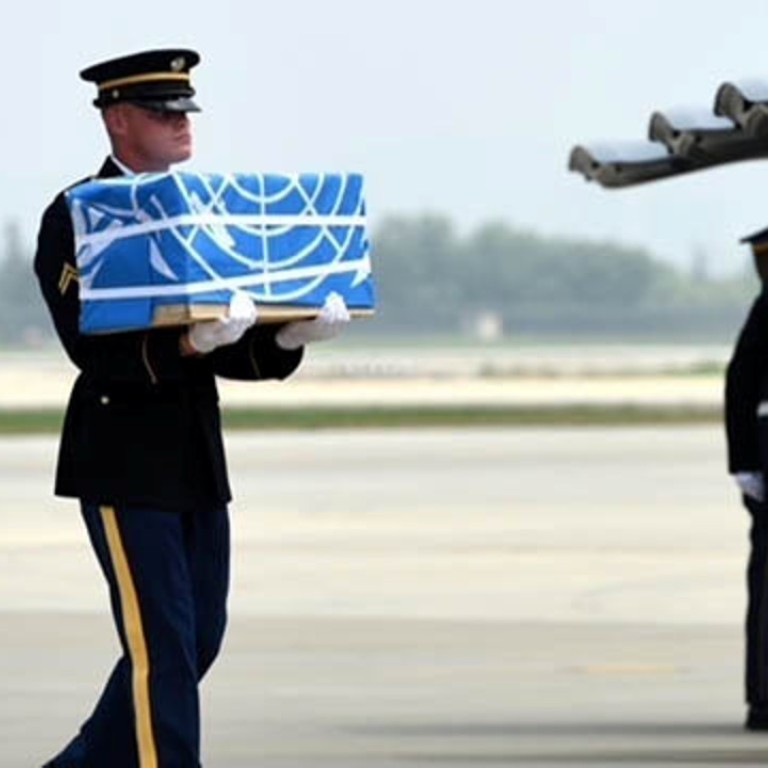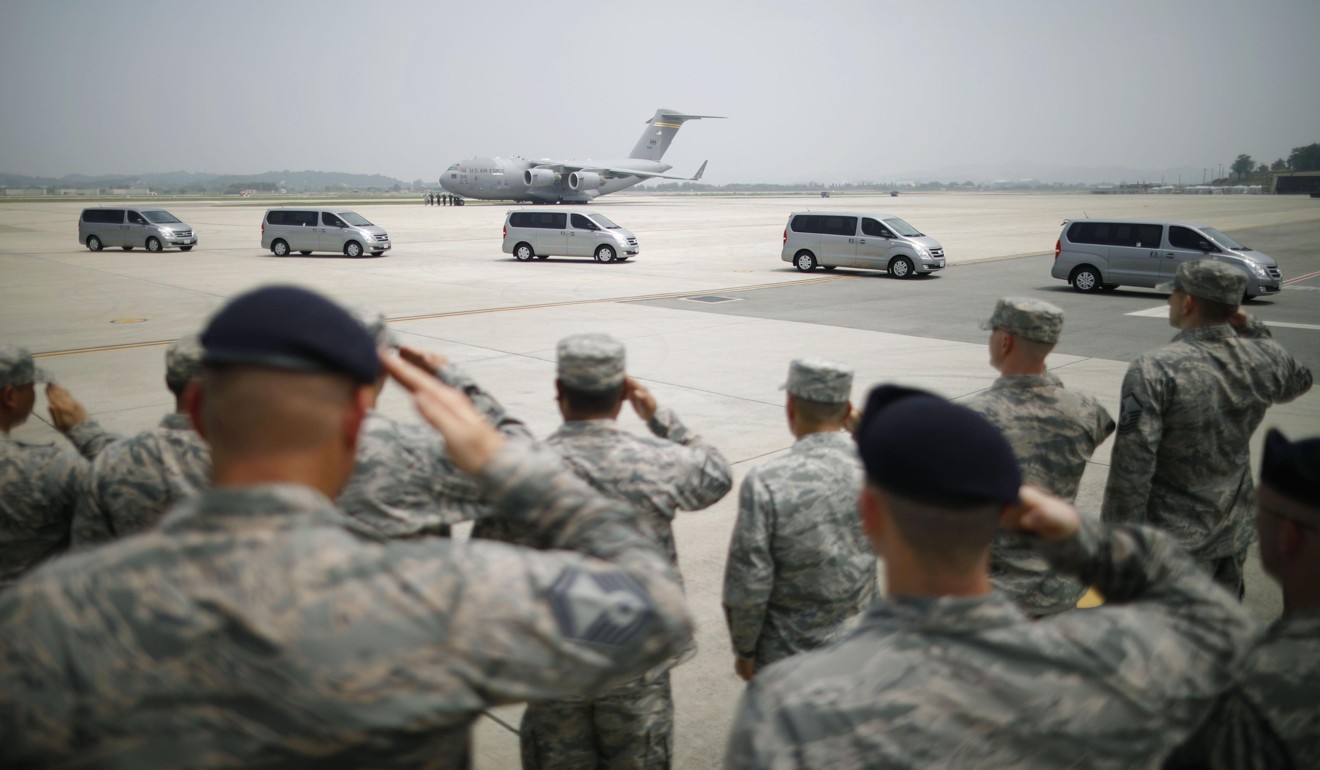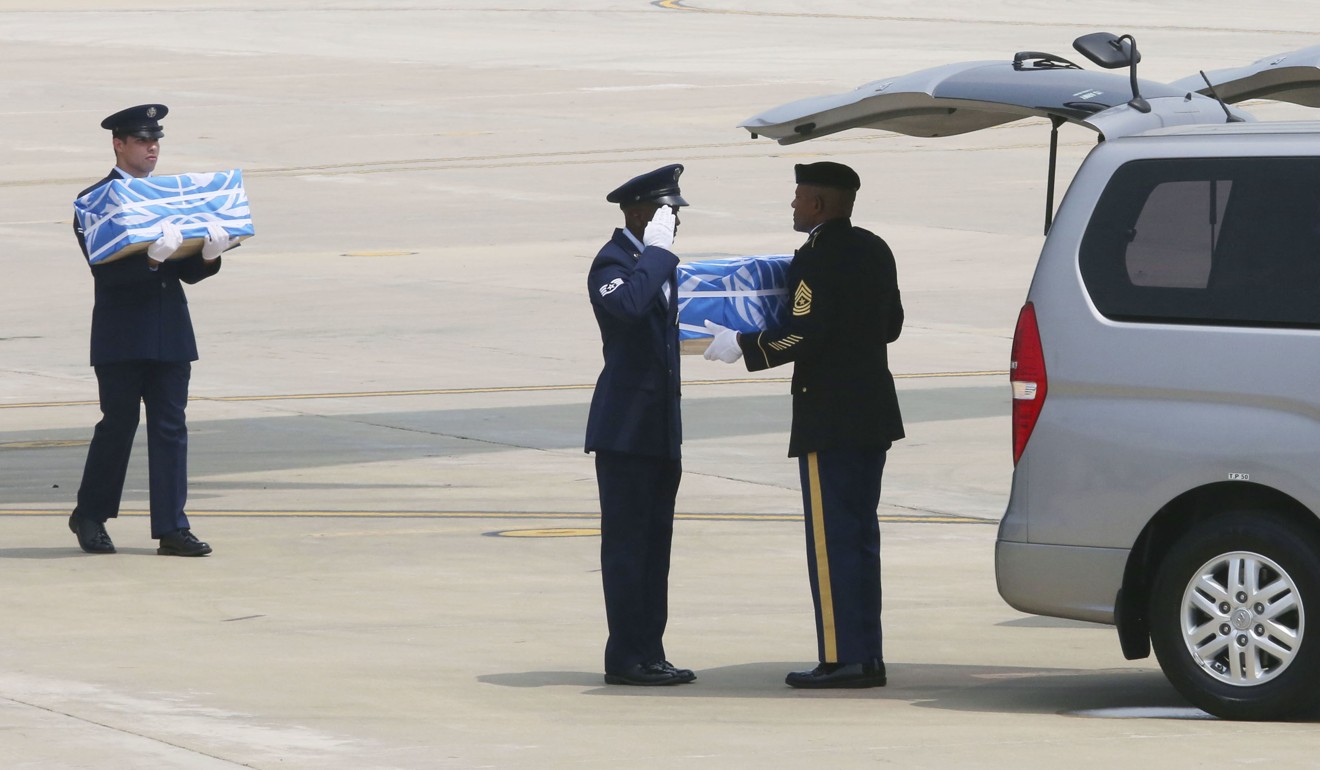
X-ray to DNA: US military has a variety of tools to verify remains
Dozens of boxes containing what’s left of American soldiers who died in the Korean war will be sent to a lab in Hawaii to confirm who they were
The US military remains released by North Korea on Friday will be sent to a military lab in Hawaii, where they’ll enter a system that routinely identifies service members from decades-old conflicts.
Identifications depend on combining multiple lines of evidence, and they can take time: Some cases are not resolved for decades.

Dog tags found with the remains can help, and even scraps of clothing can be traced to the material used in uniforms. Teeth can be matched with dental records and bones can be used to estimate height. The distinctive shape of a clavicle bone can be matched to records of X-rays taken decades ago to look for tuberculosis, said Charles Prichard, a spokesman for the Defence POW/MIA Accounting Agency.
If DNA analysis is called for, samples are sent to a lab at Dover Air Force Base in Delaware.

Tiny samples of bone or teeth, no bigger than the amount of bone in the last joint of the little finger, are enough to yield usable DNA, said Timothy McMahon, who oversees the Dover lab as director of Defence Department DNA Operations.
Each sample is sanded to remove surface contamination, ground to the consistency of baby powder, and then treated with a substance that dissolves the bone and leaves the DNA for analysis. That DNA is then compared with genetic samples from living people who are related to the missing.

The military has been collecting DNA from such family members since 1992, and has reached the relatives of 92 per cent of the 8,100 service members who were listed as missing at the end of the Korean war, McMahon said.
The goal is to find bits of DNA in common between the known relatives and the unidentified remains, suggesting both belong to a particular lineage. One analysis develops a profile that combines what’s found at 23 spots in the DNA, for example.

By analysing different kinds of DNA, lab scientists can look for markers passed down by generations of women, or of men, or of both sexes.
Once a link is made, the lab estimates how strongly it suggests the remains belong to a particular person, and send the results back to Hawaii. There, it’s combined with the other lines of evidence.
“We’re just one spoke in a wheel to make the identification,” McMahon said. “We all work together.”
The agency identifies remains from not only the Korean war, but also the second world war and first Gulf war in Iraq.

If a clavicle bone can be matched to an X-ray, it might be done in three days, Prichard said. But in other cases, it can take decades. He noted some remains recovered from North Korea between 1990 and 2005 have still not been identified.
For Jan Curran, of Gilbert, Arizona, the new remains turned over by North Korea have stirred hope.
Curran has no memory of her father, naval aviator Charles Garrison, who was shot down over Korea and captured in May 1951. He died in captivity and no remains have been identified.

Curran, 70, has spent decades working to give him a proper burial. She has attended scores of meetings for families of those missing in action in Korea. She was the driving force in the late 1990s in getting several of her family members – including her sister, an aunt, an uncle and cousins – to join her in giving DNA samples to the military in an effort to identify her father’s remains, should they be found.
Will their long wait now come to an end?
“We know it’s a small chance, but we can’t help but hope,” she said. “It’s amazing, after all these years, how much it can still hurt not to have him.”

